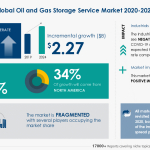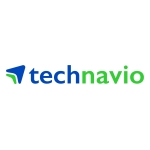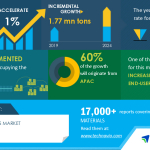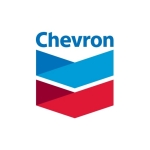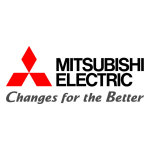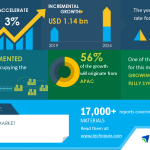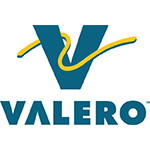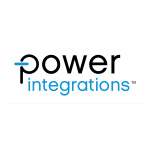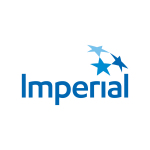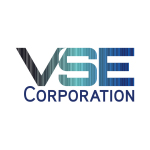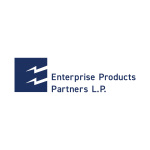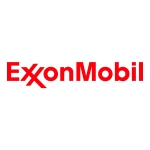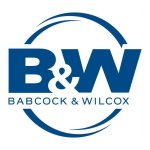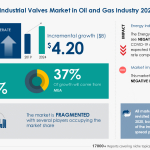-
Second quarter sales of $28 million yielded $0.27 earnings per share
-
Orders were $35.0 million in the quarter; Backlog improved sequentially to $114.9 million
-
Revenue guidance increased to $93 million to $97 million and gross margin expectation improved to 21% to 23%
BATAVIA, N.Y.--(BUSINESS WIRE)--Graham Corporation (NYSE: GHM), a global business that designs, manufactures and sells critical equipment for the oil refining, petrochemical and defense industries, today reported financial results for its second quarter ended September 30, 2020. Graham’s current fiscal year ends March 31, 2021 (“fiscal 2021”).
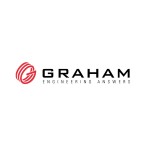
James R. Lines, Graham’s President and Chief Executive Officer, commented, “Results in the second quarter benefited from strong defense industry sales, including a materials only order. We also had the benefit of improved efficiencies in both our supply chain and our production facilities which enabled us to accelerate conversion of both large and short cycle orders in the quarter. As a result, higher volume drove operating leverage which is inherent in our business model.”
Mr. Lines continued, “We had strong orders in the quarter of $35 million. This order level was driven by our strategy to further our geographic market reach and diversify our end markets, which includes increasing our participation in the defense industry. We remain confident in our ability to achieve the long-term goal of significantly growing our business organically, as well as continuing to consider acquisition opportunities.”
Second Quarter Fiscal 2021 Sales Summary (Compared with the prior-year period unless noted otherwise. See accompanying financial tables for a breakdown of sales by industry and region)
Net sales were $28.0 million compared with $21.6 million in the second quarter of fiscal 2020. The strong increase in sales reflects Graham’s strategy to increase its defense business sales with the U.S. Navy and sales to previously underserved markets.
Sales to the defense markets were up $6.8 million to $9.4 million compared with the prior year period and represented 34% of total sales. Sales to the chemical/petrochemical market were $5.5 million compared with $10.5 million in the prior year. Sales to the refining market increased $4.0 million to $10.3 million and sales to other commercial markets increased $0.6 million to $2.8 million.
From a geographic perspective, domestic sales were 62% of total sales compared with 73% in the second quarter of fiscal 2020. International sales were 38% of total sales, compared with 27% in the prior-year period.
Fluctuations in Graham’s sales among geographic locations and industries can vary measurably from quarter-to-quarter based on the timing and magnitude of projects. Graham does not believe that such quarter-to-quarter fluctuations are indicative of business trends, which it believes are more apparent on a trailing twelve-month basis.
Second Quarter Fiscal 2021 Performance Review*(Compared with the prior-year period unless noted otherwise)
|
|
|
|
|
|
|
| ($ in millions except per share data) |
|
Q2 FY21
|
|
Q2 FY20
|
|
Change
|
| Net sales |
|
$
|
28.0
|
|
|
$
|
21.6
|
|
|
$
|
6.4
|
| Gross profit |
|
$
|
7.7
|
|
|
$
|
4.9
|
|
|
$
|
2.8
|
| Gross margin |
|
|
27.5
|
%
|
|
|
22.9
|
%
|
|
|
| Operating profit |
|
$
|
3.4
|
|
|
$
|
1.1
|
|
|
$
|
2.3
|
| Operating margin |
|
|
12.3
|
%
|
|
|
5.1
|
%
|
|
|
| Net income |
|
$
|
2.7
|
|
|
$
|
1.2
|
|
|
$
|
1.5
|
| Diluted EPS |
|
$
|
0.27
|
|
|
$
|
0.12
|
|
|
|
| EBITDA |
|
$
|
4.0
|
|
|
$
|
1.7
|
|
|
$
|
2.3
|
| EBITDA margin |
|
|
14.2
|
%
|
|
|
7.8
|
%
|
|
|
*Graham believes that EBITDA (defined as consolidated net income before net interest income, income taxes, depreciation, and amortization), and EBITDA margin (EBITDA as a percentage of sales), which are non-GAAP measures, help in the understanding of its operating performance. Moreover, Graham’s credit facility also contains ratios based on EBITDA. See the attached table on page 10 for additional important disclosures regarding Graham’s use of EBITDA and EBITDA margin as well as the reconciliation of net income to EBITDA.
Gross margin expanded 460 basis points to 27.5% driven by higher volume level as well as favorable mix of projects.
Selling, general and administrative (“SG&A”) expenses, were $4.3 million, up $0.4 million, or 11%, compared with the prior-year period. SG&A, as a percent of sales for the three-month periods ended September 30, 2020 and 2019 were 15.2% and 17.8%, respectively.
Operating profit was $3.4 million, up from $1.1 million last year. Net income was $2.7 million, or $0.27 per share compared with $1.2 million or $0.12 per share last year.
EBITDA margin expanded 640 basis points on higher volume and lower relative operating expenses.
First Half Fiscal 2021 Performance Review (Compared with the prior-year period unless noted otherwise)
|
|
|
|
|
|
|
| ($ in millions except per share data) |
|
YTD FY21 |
|
YTD FY20 |
|
Change |
| Net sales |
|
$
|
44.7
|
|
|
$
|
42.2
|
|
|
$
|
2.5
|
|
| Gross profit |
|
$
|
9.3
|
|
|
$
|
9.7
|
|
|
$
|
(0.4
|
)
|
| Gross margin |
|
|
20.7
|
%
|
|
|
22.9
|
%
|
|
|
| Operating profit |
|
$
|
1.1
|
|
|
$
|
0.7
|
|
|
$
|
0.4
|
|
| Operating margin |
|
|
2.5
|
%
|
|
|
1.7
|
%
|
|
|
| Net income |
|
$
|
0.9
|
|
|
$
|
1.3
|
|
|
$
|
(0.4
|
)
|
| Diluted EPS |
|
$
|
0.09
|
|
|
$
|
0.13
|
|
|
|
| EBITDA |
|
$
|
2.2
|
|
|
$
|
1.9
|
|
|
$
|
0.3
|
|
| EBITDA margin |
|
|
4.9
|
%
|
|
|
4.5
|
%
|
|
|
International sales were $18.0 million and represented 40% of total sales, compared with $12.1 million, or 29%, of sales in the same prior-year period. Sales to the U.S. were $26.7 million, or 60%, of first half net sales in fiscal 2021, compared with $30.1 million, or 71%, of fiscal 2020 first half net sales.
Gross profit and margin were down compared with the prior-year period primarily as a result of production capability being significantly reduced in the first quarter fiscal 2021 due to the COVID-19 pandemic. Production during that period was at approximately 50% of normal production.
SG&A was $8.2 million, down 3%, or $0.2 million. As a percent of sales, SG&A was 18% in the quarter down from 20% in the same prior-year period. Included in the first half of 2020 was $0.6 million of SG&A for our divested commercial nuclear utility business
The effective tax rate was 30% compared with 22% in the prior-year period. The higher six-month tax rate in fiscal 2021 was due to the loss incurred in the first quarter.
Strong Balance Sheet with Ample Liquidity
Cash, cash equivalents and investments at September 30, 2020 decreased $5.1 million to $67.9 million from March 31, 2020.
Net cash used by operating activities for the first half of fiscal 2021 was $2.3 million, compared with $1.9 million of cash used for the first half of fiscal 2020. In the most recent quarter, cash used by operating activities was principally due to timing of accounts receivable and accounts payable.
Capital spending was $0.5 million in the second quarter of fiscal 2021 and was $0.8 million year-to-date. The Company expects capital expenditures for fiscal 2021 to be between $2.0 million and $2.5 million, of which 80% to 85% is expected to be for machinery and equipment and the remainder to be used for other items.
As of September 30, 2020, Graham had no debt.
Orders and Backlog
Orders for the quarter increased $2.4 million to $35.0 million. Defense orders increased $11.1 million to $12.6 million in the second quarter of fiscal 2021 more than offsetting the estimated impact the COVID-19 pandemic had on capital spending decisions by Graham’s historic refining and petrochemical customers, primarily in North America, during the quarter. Chemical and petrochemical orders were $3.3 million, compared with $6.2 million in the prior-year period. Refining orders were $16.8 million in the current quarter, compared with $22.6 million in the second quarter of fiscal 2020. The company believes that the pipeline of available opportunities in the defense industry remains strong, and that the timing of orders in this industry can be variable.
Domestic orders were 46% of total net orders in the second quarter of fiscal 2021 and were 33% in the same prior-year period.
Backlog at the end of the second quarter of fiscal 2021 was $114.9, an increase of $7.7 million from June 30, 2020. The increase reflects previously announced orders placed in the second quarter valued at $28.5 million.
Backlog by industry at September 30, 2020 was approximately:
-
50% for U.S. Navy projects
-
37% for refinery projects
-
9% for chemical/petrochemical projects
-
4% for other industrial applications
The Company expects 60% to 65% of backlog to convert to revenue within the next 12 months.
Increasing Fiscal 2021 Guidance
Mr. Lines concluded, “Nearly all of our expected second half revenue this year is already in backlog, giving us solid confidence to increase guidance for fiscal 2021. Orders in the second quarter add to fiscal 2022 revenue potential. The strength of revenue next fiscal year will depend upon orders during the next three quarters.”
Graham is increasing revenue guidance for fiscal 2021 while raising expectations for gross margin and tightening the range for SG&A expense. This guidance is based on the assumption that Graham is able to operate its production facility at full capacity, has access to its global supply chain including its subcontractors, and experiences minimal or no additional COVID-19 related disruptions or any other unforeseen events.
-
Revenue between $93 million and $97 million
-
Gross margin between 21% and 23%
-
SG&A expense between $17.0 million and $17.5 million
-
Effective tax rate of approximately 22%
Webcast and Conference Call
Graham’s management will host a conference call and live webcast today at 11:00 a.m. Eastern Time to review its financial condition and operating results for the second quarter of fiscal 2021, as well as its strategy and outlook. The review will be accompanied by a slide presentation which will be made available immediately prior to the conference call on Graham’s website at www.graham-mfg.com under the heading “Investor Relations.” A question-and-answer session will follow the formal presentation.
Graham’s conference call can be accessed by calling (201) 689-8560. Alternatively, the webcast can be monitored on Graham’s website at www.graham-mfg.com under the heading “Investor Relations.”
A telephonic replay will be available from 2:00 p.m. ET today through Wednesday, November 4, 2020. To listen to the archived call, dial (412) 317-6671 and enter conference ID number 13710948. A transcript of the call will be placed on Graham’s website, once available.
ABOUT GRAHAM CORPORATION
Graham is a global business that designs, manufactures and sells critical equipment for the energy, defense and chemical/petrochemical industries. Energy markets include oil refining, cogeneration, and alternative power. For the defense industry, the Company’s equipment is used in nuclear propulsion power systems for the U.S. Navy. Graham’s global brand is built upon world-renowned engineering expertise in vacuum and heat transfer technology, responsive and flexible service and unsurpassed quality.
Graham designs and manufactures custom-engineered ejectors, vacuum pumping systems, surface condensers and vacuum systems. Graham’s equipment can also be found in other diverse applications such as metal refining, pulp and paper processing, water heating, refrigeration, desalination, food processing, pharmaceutical, heating, ventilating and air conditioning. Graham’s reach spans the globe and its equipment is installed in facilities from North and South America to Europe, Asia, Africa and the Middle East.
Graham routinely posts news and other important information on its website, www.graham-mfg.com, where additional comprehensive information on Graham Corporation and its subsidiaries can be found.
Safe Harbor Regarding Forward Looking Statements
This news release contains forward-looking statements within the meaning of Section 27A of the Securities Act of 1933, as amended, and Section 21E of the Securities Exchange Act of 1934, as amended.
Forward-looking statements are subject to risks, uncertainties and assumptions and are identified by words such as “expects,” “estimates,” “confidence,” “projects,” “typically,” “outlook,” “anticipates,” “believes,” “appears,” “could,” “opportunities,” “seeking,” “plans,” “aim,” “pursuit,” “look towards” and other similar words. All statements addressing operating performance, events, or developments that Graham Corporation expects or anticipates will occur in the future, including but not limited to, effects of the COVID-19 global pandemic, expected expansion and growth opportunities within its domestic and international markets, anticipated revenue, the timing of conversion of backlog to sales, market presence, profit margins, tax rates, foreign sales operations, its ability to improve cost competitiveness and productivity, customer preferences, changes in market conditions in the industries in which it operates, the effect on its business of volatility in commodities prices, including, but not limited to, the extreme price volatility seen in the first six months of calendar year 2020, changes in general economic conditions and customer behavior, forecasts regarding the timing and scope of the economic recovery in its markets, its acquisition and growth strategy and its operations in China, India and other international locations, are forward-looking statements. Because they are forward-looking, they should be evaluated in light of important risk factors and uncertainties. These risk factors and uncertainties are more fully described in Graham Corporation’s most recent Annual Report filed with the Securities and Exchange Commission, included under the heading entitled “Risk Factors.”
Should one or more of these risks or uncertainties materialize or should any of Graham Corporation’s underlying assumptions prove incorrect, actual results may vary materially from those currently anticipated. In addition, undue reliance should not be placed on Graham Corporation’s forward-looking statements. Except as required by law, Graham Corporation disclaims any obligation to update or publicly announce any revisions to any of the forward-looking statements contained in this news release.
Graham Corporation
|
Second Quarter Fiscal 2021
|
Consolidated Statements of Operations - Unaudited
|
(Amounts in thousands, except per share data)
|
|
|
|
|
|
|
|
|
|
|
|
|
|
|
|
Three Months Ended
|
|
Six Months Ended
|
|
September 30,
|
|
September 30,
|
|
|
|
|
|
|
|
|
|
|
|
|
|
|
|
2020
|
|
2019
|
|
% Change
|
|
2020
|
|
2019
|
|
% Change
|
Net sales
|
|
$
|
27,954
|
|
|
$
|
21,643
|
|
|
29
|
%
|
|
$
|
44,664
|
|
|
$
|
42,236
|
|
|
6
|
%
|
Cost of products sold
|
|
|
20,261
|
|
|
|
16,695
|
|
|
21
|
%
|
|
|
35,403
|
|
|
|
32,574
|
|
|
9
|
%
|
Gross profit
|
|
|
7,693
|
|
|
|
4,948
|
|
|
55
|
%
|
|
|
9,261
|
|
|
|
9,662
|
|
|
(4
|
%)
|
Gross margin
|
|
|
27.5
|
%
|
|
|
22.9
|
%
|
|
|
|
|
20.7
|
%
|
|
|
22.9
|
%
|
|
|
|
|
|
|
|
|
|
|
|
|
|
|
|
Other expenses and income:
|
|
|
|
|
|
|
|
|
|
|
|
|
Selling, general and administrative
|
|
|
4,253
|
|
|
|
3,847
|
|
|
11
|
%
|
|
|
8,155
|
|
|
|
8,403
|
|
|
(3
|
%)
|
Selling, general and administrative – amortization
|
|
|
-
|
|
|
|
-
|
|
|
NA
|
|
|
-
|
|
|
|
11
|
|
|
NA
|
Other expense
|
|
|
-
|
|
|
|
-
|
|
|
NA
|
|
|
-
|
|
|
|
523
|
|
|
NA
|
Operating profit
|
|
|
3,440
|
|
|
|
1,101
|
|
|
212
|
%
|
|
|
1,106
|
|
|
|
725
|
|
|
53
|
%
|
Operating margin
|
|
|
12.3
|
%
|
|
|
5.1
|
%
|
|
|
|
|
2.5
|
%
|
|
|
1.7
|
%
|
|
|
|
|
|
|
|
|
|
|
|
|
|
|
|
Other income
|
|
|
(54
|
)
|
|
|
(87
|
)
|
|
(38
|
%)
|
|
|
(109
|
)
|
|
|
(174
|
)
|
|
(37
|
%)
|
Interest income
|
|
|
(26
|
)
|
|
|
(363
|
)
|
|
(93
|
%)
|
|
|
(120
|
)
|
|
|
(762
|
)
|
|
(84
|
%)
|
Interest expense
|
|
|
3
|
|
|
|
4
|
|
|
(25
|
%)
|
|
|
8
|
|
|
|
7
|
|
|
14
|
%
|
Income before provision for income taxes
|
|
|
3,517
|
|
|
|
1,547
|
|
|
127
|
%
|
|
|
1,327
|
|
|
|
1,654
|
|
|
(20
|
%)
|
Provision for income taxes
|
|
|
773
|
|
|
|
342
|
|
|
126
|
%
|
|
|
401
|
|
|
|
367
|
|
|
9
|
%
|
Net income
|
|
$
|
2,744
|
|
|
$
|
1,205
|
|
|
128
|
%
|
|
$
|
926
|
|
|
$
|
1,287
|
|
|
(28
|
%)
|
|
|
|
|
|
|
|
|
|
|
|
|
|
Per share data:
|
|
|
|
|
|
|
|
|
|
|
|
|
Basic:
|
|
|
|
|
|
|
|
|
|
|
|
|
Net income
|
|
$
|
0.27
|
|
|
$
|
0.12
|
|
|
125
|
%
|
|
$
|
0.09
|
|
|
$
|
0.13
|
|
|
(31
|
%)
|
Diluted:
|
|
|
|
|
|
|
|
|
|
|
|
|
Net income
|
|
$
|
0.27
|
|
|
$
|
0.12
|
|
|
125
|
%
|
|
$
|
0.09
|
|
|
$
|
0.13
|
|
|
(31
|
%)
|
|
|
|
|
|
|
|
|
|
|
|
|
|
Weighted average common shares outstanding:
|
|
|
|
|
|
|
|
|
|
|
|
|
Basic
|
|
|
9,977
|
|
|
|
9,883
|
|
|
|
|
|
9,936
|
|
|
|
9,869
|
|
|
|
Diluted
|
|
|
9,977
|
|
|
|
9,885
|
|
|
|
|
|
9,936
|
|
|
|
9,872
|
|
|
|
|
|
|
|
|
|
|
|
|
|
|
|
|
Dividends declared per share
|
|
$
|
0.11
|
|
|
$
|
0.11
|
|
|
|
|
$
|
0.22
|
|
|
$
|
0.21
|
|
|
|
|
|
|
|
|
|
|
|
|
|
|
|
|
N/A: Not Applicable
|
|
|
|
|
|
|
|
|
|
|
|
|
Graham Corporation
|
Second Quarter Fiscal 2021
|
Consolidated Balance Sheets - Unaudited
|
(Amounts in thousands, except per share data)
|
|
|
September 30,
|
|
March 31,
|
|
|
2020
|
|
2020
|
| Assets |
|
|
|
|
| Current assets: |
|
|
|
|
| Cash and cash equivalents |
|
$
|
62,356
|
|
|
$
|
32,955
|
|
| Investments |
|
|
5,500
|
|
|
|
40,048
|
|
| Trade accounts receivable, net of allowances ($41 and $33 at September 30 and March 31, 2020, respectively) |
|
|
19,276
|
|
|
|
15,400
|
|
| Unbilled revenue |
|
|
13,691
|
|
|
|
14,592
|
|
| Inventories |
|
|
20,615
|
|
|
|
22,291
|
|
| Prepaid expenses and other current assets |
|
|
1,378
|
|
|
|
906
|
|
| Income taxes receivable |
|
|
322
|
|
|
|
485
|
|
| Total current assets |
|
|
123,138
|
|
|
|
126,677
|
|
| Property, plant and equipment, net |
|
|
17,327
|
|
|
|
17,587
|
|
| Prepaid pension asset |
|
|
3,881
|
|
|
|
3,460
|
|
| Operating lease assets |
|
|
171
|
|
|
|
243
|
|
| Other assets |
|
|
105
|
|
|
|
153
|
|
| Total assets |
|
$
|
144,622
|
|
|
$
|
148,120
|
|
|
|
|
|
|
| Liabilities and stockholders’ equity |
|
|
|
|
| Current liabilities: |
|
|
|
|
| Current portion of finance lease obligations |
|
$
|
26
|
|
|
$
|
40
|
|
| Accounts payable |
|
|
11,669
|
|
|
|
14,253
|
|
| Accrued compensation |
|
|
5,082
|
|
|
|
4,453
|
|
| Accrued expenses and other current liabilities |
|
|
3,867
|
|
|
|
3,352
|
|
| Customer deposits |
|
|
24,838
|
|
|
|
26,983
|
|
| Operating lease liabilities |
|
|
110
|
|
|
|
153
|
|
| Total current liabilities |
|
|
45,592
|
|
|
|
49,234
|
|
| Finance lease obligations |
|
|
45
|
|
|
|
55
|
|
| Operating lease liabilities |
|
|
53
|
|
|
|
82
|
|
| Deferred income tax liability |
|
|
988
|
|
|
|
721
|
|
| Accrued pension liability |
|
|
800
|
|
|
|
747
|
|
| Accrued postretirement benefits |
|
|
567
|
|
|
|
557
|
|
| Total liabilities |
|
|
48,045
|
|
|
|
51,396
|
|
|
|
|
|
|
| Stockholders’ equity: |
|
|
|
|
| Preferred stock, $1.00 par value, 500 shares authorized |
|
|
-
|
|
|
|
-
|
|
| Common stock, $0.10 par value, 25,500 shares authorized, 10,780 and 10,689 shares issued and 9,977 and 9,881 shares outstanding at September 30 and March 31, 2020, respectively |
|
|
1,078
|
|
|
|
1,069
|
|
| Capital in excess of par value |
|
|
26,866
|
|
|
|
26,361
|
|
| Retained earnings |
|
|
90,120
|
|
|
|
91,389
|
|
| Accumulated other comprehensive loss |
|
|
(8,992
|
)
|
|
|
(9,556
|
)
|
| Treasury stock (803 and 808 shares at September 30 and March 31, 2020, respectively) |
|
|
(12,495
|
)
|
|
|
(12,539
|
)
|
| Total stockholders’ equity |
|
|
96,577
|
|
|
|
96,724
|
|
| Total liabilities and stockholders’ equity |
|
$
|
144,622
|
|
|
$
|
148,120
|
|
|
|
|
|
|
Graham Corporation
|
Second Quarter Fiscal 2021
|
Consolidated Statements of Cash Flows – Unaudited
|
(Amounts in thousands)
|
|
|
Six Months Ended
|
|
|
September 30,
|
|
|
2020
|
|
2019
|
| Operating activities: |
|
|
|
|
| Net income |
|
$
|
926
|
|
|
$
|
1,287
|
|
| Adjustments to reconcile net income to net cash used by operating activities: |
|
|
|
|
| Depreciation |
|
|
972
|
|
|
|
980
|
|
| Amortization |
|
|
-
|
|
|
|
11
|
|
| Amortization of actuarial losses |
|
|
533
|
|
|
|
498
|
|
| Equity-based compensation expense |
|
|
494
|
|
|
|
412
|
|
| Gain on disposal or sale of property, plant and equipment |
|
|
3
|
|
|
|
-
|
|
| Loss on sale of Energy Steel & Supply Co. |
|
|
-
|
|
|
|
87
|
|
| Deferred income taxes |
|
|
191
|
|
|
|
119
|
|
| (Increase) decrease in operating assets: |
|
|
|
|
| Accounts receivable |
|
|
(3,820
|
)
|
|
|
5,287
|
|
| Unbilled revenue |
|
|
901
|
|
|
|
(5,514
|
)
|
| Inventories |
|
|
1,808
|
|
|
|
990
|
|
| Prepaid expenses and other current and non-current assets |
|
|
(456
|
)
|
|
|
109
|
|
| Income taxes receivable |
|
|
163
|
|
|
|
233
|
|
| Operating lease assets |
|
|
75
|
|
|
|
138
|
|
| Prepaid pension asset |
|
|
(421
|
)
|
|
|
(435
|
)
|
| Increase (decrease) in operating liabilities: |
|
|
|
|
| Accounts payable |
|
|
(2,544
|
)
|
|
|
(4,721
|
)
|
| Accrued compensation, accrued expenses and other current and non-current liabilities |
|
|
1,214
|
|
|
|
(268
|
)
|
| Customer deposits |
|
|
(2,285
|
)
|
|
|
(1,116
|
)
|
| Operating lease liabilities |
|
|
(75
|
)
|
|
|
(64
|
)
|
| Long-term portion of accrued compensation, accrued pension liability and accrued postretirement benefits |
|
|
63
|
|
|
|
52
|
|
| Net cash used by operating activities |
|
|
(2,258
|
)
|
|
|
(1,915
|
)
|
|
|
|
|
|
| Investing activities: |
|
|
|
|
| Purchase of property, plant and equipment |
|
|
(797
|
)
|
|
|
(679
|
)
|
| Proceeds from disposal of property, plant and equipment |
|
|
6
|
|
|
|
-
|
|
| Proceeds from the sale of Energy Steel & Supply Co. |
|
|
-
|
|
|
|
602
|
|
| Purchase of investments |
|
|
(31,603
|
)
|
|
|
(82,414
|
)
|
| Redemption of investments at maturity |
|
|
66,151
|
|
|
|
83,232
|
|
| Net cash provided by investing activities |
|
|
33,757
|
|
|
|
741
|
|
|
|
|
|
|
| Financing activities: |
|
|
|
|
| Principal repayments on finance lease obligations |
|
|
(24
|
)
|
|
|
(25
|
)
|
| Principal repayments on long-term debt |
|
|
(4,599
|
)
|
|
|
-
|
|
| Proceeds from the issuance of long-term debt |
|
|
4,599
|
|
|
|
-
|
|
| Dividends paid |
|
|
(2,195
|
)
|
|
|
(2,075
|
)
|
| Purchase of treasury stock |
|
|
(23
|
)
|
|
|
(230
|
)
|
| Net cash used by financing activities |
|
|
(2,242
|
)
|
|
|
(2,330
|
)
|
| Effect of exchange rate changes on cash |
|
|
144
|
|
|
|
(187
|
)
|
| Net increase (decrease) in cash and cash equivalents, including cash classified within current assets held for sale |
|
|
29,401
|
|
|
|
(3,691
|
)
|
| Net decrease in cash classified within current assets held for sale |
|
|
-
|
|
|
|
552
|
|
| Net increase (decrease) in cash and cash equivalents |
|
|
29,401
|
|
|
|
(3,139
|
)
|
| Cash and cash equivalents at beginning of period |
|
|
32,955
|
|
|
|
15,021
|
|
| Cash and cash equivalents at end of period |
|
$
|
62,356
|
|
|
$
|
11,882
|
|
|
|
|
|
|
Graham Corporation
|
Second Quarter Fiscal 2021
|
EBITDA Reconciliation - Unaudited
|
(Amounts in thousands)
|
|
|
|
|
|
|
|
Three Months Ended
|
|
Six Months Ended
|
|
|
September 30,
|
|
September 30,
|
|
|
2020
|
|
2019
|
|
2020
|
|
2019
|
| Net income |
|
$
|
2,744
|
|
|
$
|
1,205
|
|
|
$
|
926
|
|
|
$
|
1,287
|
|
| Net interest income |
|
|
(23
|
)
|
|
|
(359
|
)
|
|
|
(112
|
)
|
|
|
(755
|
)
|
| Income taxes |
|
|
773
|
|
|
|
342
|
|
|
|
401
|
|
|
|
367
|
|
| Depreciation & amortization |
|
|
486
|
|
|
|
490
|
|
|
|
972
|
|
|
|
991
|
|
| EBITDA |
|
$
|
3,980
|
|
|
$
|
1,678
|
|
|
$
|
2,187
|
|
|
$
|
1,890
|
|
| EBITDA margin % |
|
|
14.2
|
%
|
|
|
7.8
|
%
|
|
|
4.9
|
%
|
|
|
4.5
|
%
|
Non-GAAP Financial Measure:
EBITDA is defined as consolidated net income before net interest income, income taxes, depreciation, and amortization and EBITDA margin is defined as EBITDA as a percentage of sales. EBITDA and EBITDA margin are not measures determined in accordance with generally accepted accounting principles in the United States, commonly known as GAAP. Nevertheless, Graham believes that providing non-GAAP information, such as EBITDA, is important for investors and other readers of Graham's financial statements, as it is used as an analytical indicator by Graham's management to better understand operating performance. Moreover, Graham’s credit facility also contains ratios based on EBITDA. Because EBITDA is a non-GAAP measure and is thus susceptible to varying calculations, EBITDA, as presented, may not be directly comparable to other similarly titled measures used by other companies.
Graham Corporation
Second Quarter Fiscal 2021
Additional Information – Unaudited
| ORDER & BACKLOG TREND |
| ($ in millions) |
|
|
|
|
|
|
|
|
|
|
|
|
|
|
|
|
|
Q120
|
|
Q220
|
|
Q320
|
|
Q420
|
|
FY2020
|
|
Q121
|
|
Q221
|
|
|
Total
|
|
Total
|
|
Total
|
|
Total
|
|
Total
|
|
Total
|
|
Total
|
| Orders |
|
$
|
15.1
|
|
$
|
32.6
|
|
$
|
20.0
|
|
$
|
12.3
|
|
$
|
80.0
|
|
$
|
11.5
|
|
$
|
35.0
|
| Backlog |
|
$
|
117.2
|
|
$
|
127.8
|
|
$
|
122.9
|
|
$
|
112.4
|
|
$
|
112.4
|
|
$
|
107.2
|
|
$
|
114.9
|
|
|
|
|
|
|
|
|
|
|
|
|
|
|
|
| SALES BY INDUSTRY FY 2021 |
| ($ in millions) |
|
|
|
|
|
|
|
|
|
|
|
|
|
|
|
|
|
| FY 2021 |
|
Q1 |
|
% of |
|
Q2 |
|
% of |
|
|
6/30/20 |
|
Total |
|
9/30/20 |
|
Total |
| Refining |
|
$
|
2.7
|
|
16
|
%
|
|
$
|
|
10.3
|
|
37
|
%
|
| Chemical/ Petrochemical |
|
$
|
8.0
|
|
48
|
%
|
|
$
|
|
5.5
|
|
20
|
%
|
| Defense |
|
$
|
3.5
|
|
21
|
%
|
|
$
|
|
9.4
|
|
34
|
%
|
| Other Commercial |
|
$
|
2.5
|
|
15
|
%
|
|
$
|
|
2.8
|
|
10
|
%
|
| Total |
|
$
|
16.7
|
|
|
|
$
|
|
28.0
|
|
|
|
|
|
|
|
|
|
|
|
| SALES BY INDUSTRY FY 2020 |
| ($ in millions) |
|
|
|
|
|
|
|
|
|
|
|
|
|
|
|
|
|
|
|
|
|
| FY 2020 |
|
Q1
|
|
% of
|
|
Q2
|
|
% of
|
|
Q3
|
|
% of
|
|
Q4
|
|
% of
|
|
FY2020
|
|
% of
|
|
|
6/30/19
|
|
Total
|
|
9/30/19
|
|
Total
|
|
12/31/19
|
|
Total
|
|
3/31/20
|
|
Total
|
|
|
|
Total
|
| Refining |
|
$
|
7.5
|
|
36
|
%
|
|
$
|
6.3
|
|
29
|
%
|
|
$
|
12.2
|
|
49
|
%
|
|
$
|
7.4
|
|
32
|
%
|
|
$
|
33.4
|
|
37
|
%
|
| Chemical/ Petrochemical |
|
$
|
7.1
|
|
35
|
%
|
|
$
|
10.5
|
|
48
|
%
|
|
$
|
6.2
|
|
24
|
%
|
|
$
|
7.1
|
|
31
|
%
|
|
$
|
30.9
|
|
34
|
%
|
| Defense |
|
$
|
2.1
|
|
10
|
%
|
|
$
|
2.6
|
|
12
|
%
|
|
$
|
4.3
|
|
17
|
%
|
|
$
|
5.6
|
|
24
|
%
|
|
$
|
14.6
|
|
16
|
%
|
| Other Commercial |
|
$
|
3.9
|
|
19
|
%
|
|
$
|
2.2
|
|
11
|
%
|
|
$
|
2.6
|
|
10
|
%
|
|
$
|
3.0
|
|
13
|
%
|
|
$
|
11.7
|
|
13
|
%
|
| Total |
|
$
|
20.6
|
|
|
|
$
|
21.6
|
|
|
|
$
|
25.3
|
|
|
|
$
|
23.1
|
|
|
|
$
|
90.6
|
|
|
|
|
|
|
|
|
|
|
|
|
|
|
|
|
|
|
|
|
|
|
|
Graham Corporation
Second Quarter Fiscal 2021
Additional Information - Unaudited
(Continued)
|
SALES BY REGION FY 2021
|
|
($ in millions) |
|
|
|
|
|
|
|
|
|
|
|
|
|
|
|
|
|
|
|
FY 2021 |
|
Q1 |
|
% of |
|
Q2 |
|
% of |
|
|
|
6/30/20 |
|
Total |
|
9/30/20 |
|
Total |
|
United States |
|
$
|
9.4
|
|
56
|
%
|
|
$
|
17.3
|
|
62
|
%
|
|
Middle East |
|
$
|
0.4
|
|
3
|
%
|
|
$
|
1.0
|
|
4
|
%
|
|
Asia |
|
$
|
5.2
|
|
31
|
%
|
|
$
|
4.5
|
|
16
|
%
|
|
Other |
|
$
|
1.7
|
|
10
|
%
|
|
$
|
5.2
|
|
18
|
%
|
|
Total |
|
$
|
16.7
|
|
|
|
$
|
28.0
|
|
|
|
SALES BY REGION FY 2020 |
|
($ in millions) |
|
|
|
|
|
|
|
|
|
|
|
|
|
|
|
|
|
|
|
|
|
|
|
|
|
|
|
|
|
|
|
|
|
|
|
|
|
|
|
|
|
|
|
FY 2020 |
|
Q1 |
|
% of |
|
Q2 |
|
% of |
|
Q3 |
|
% of |
|
Q4 |
|
% of |
|
FY2020 |
|
% of |
|
|
|
6/30/19 |
|
Total |
|
9/30/19 |
|
Total |
|
12/31/19 |
|
Total |
|
3/31/20 |
|
Total |
|
|
|
Total |
|
United States |
|
$
|
14.4
|
|
70
|
%
|
|
$
|
15.7
|
|
73
|
%
|
|
$
|
13.4
|
|
53
|
%
|
|
$
|
14.5
|
|
63
|
%
|
|
$
|
58.0
|
|
64
|
%
|
|
Middle East |
|
$
|
0.8
|
|
4
|
%
|
|
$
|
0.5
|
|
2
|
%
|
|
$
|
7.5
|
|
30
|
%
|
|
$
|
4.3
|
|
19
|
%
|
|
$
|
13.1
|
|
14
|
%
|
|
Asia |
|
$
|
3.2
|
|
16
|
%
|
|
$
|
1.0
|
|
5
|
%
|
|
$
|
0.7
|
|
3
|
%
|
|
$
|
0.6
|
|
2
|
%
|
|
$
|
5.5
|
|
6
|
%
|
|
Other |
|
$
|
2.2
|
|
10
|
%
|
|
$
|
4.4
|
|
20
|
%
|
|
$
|
3.7
|
|
14
|
%
|
|
$
|
3.7
|
|
16
|
%
|
|
$
|
14.0
|
|
16
|
%
|
|
Total |
|
$
|
20.6
|
|
|
|
$
|
21.6
|
|
|
|
$
|
25.3
|
|
|
|
$
|
23.1
|
|
|
|
$
|
90.6
|
|

Contacts
Jeffrey F. Glajch
Vice President – Finance and CFO
Phone: (585) 343-2216
This email address is being protected from spambots. You need JavaScript enabled to view it.
Deborah K. Pawlowski / Christopher M. Gordon
Kei Advisors LLC
Phone: (716) 843-3908 / (716) 843-3748
This email address is being protected from spambots. You need JavaScript enabled to view it. / This email address is being protected from spambots. You need JavaScript enabled to view it.


